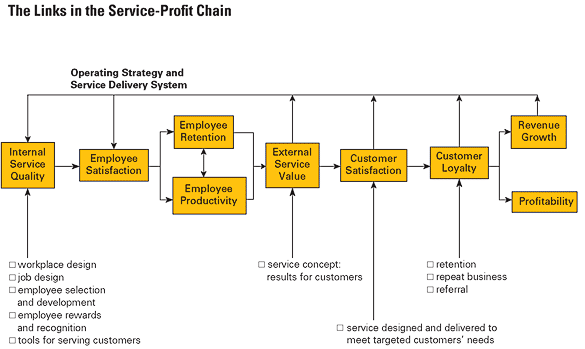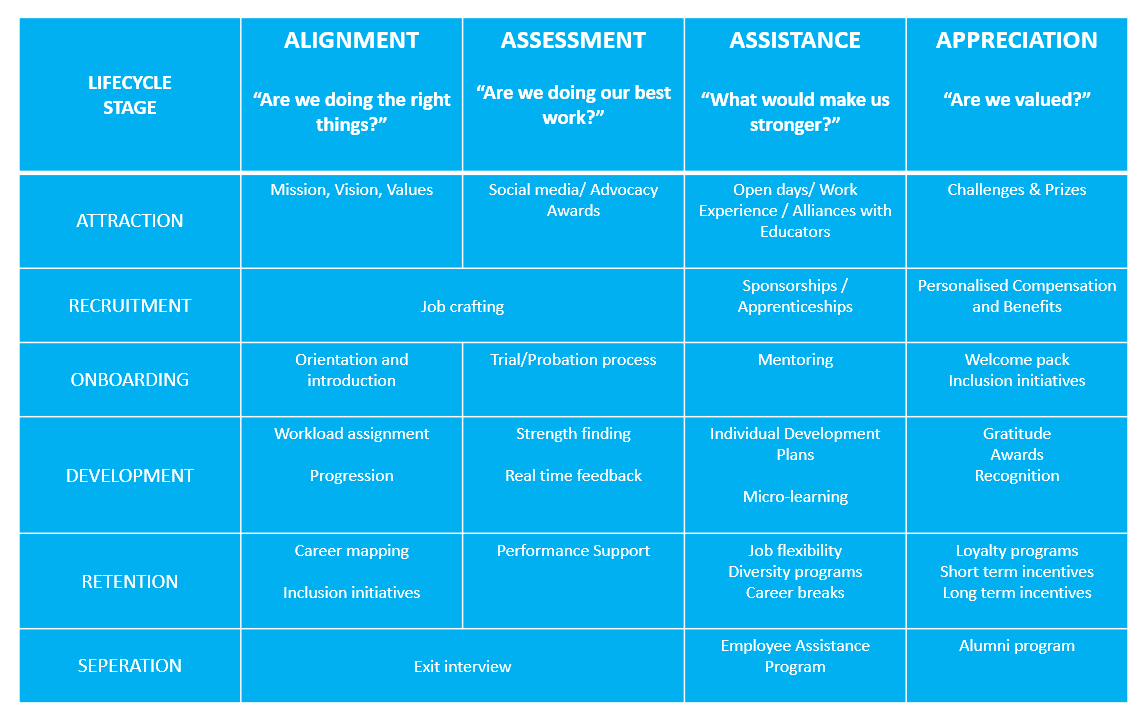 Four questions to answer to profit from meaning
Four questions to answer to profit from meaning
Service-Profit Chain
Before I knew of Harvard’s Service-Profit Chain, I used to remark that grumpy consultants never led to happy customers, and that the job of my leadership team was to keep employees satisfied. Thankfully Harvard researchers brought the science to this assertion by tracking the breakout success of organisations who worked on their employee experience above all else; businesses like Southwest Airlines, Banc One and Taco Bell.
Grossly oversimplifying it, the research demonstrates that value is created by satisfied, loyal and productive employees due to the flow on effects to customer loyalty and the benefits of lifetime customer value.

For more detail go here.
Employee satisfaction
If the first goal in the chain is employee satisfaction, what do organisations need to do to assure this?
Note the choice of words is made carefully. It’s not employee engagement, nor happiness, nor wellbeing. Although all of these contribute to satisfaction they don’t yield it. What employees do need to be satisfied in the workplace is to know that they matter, that they are doing meaningful work and that they as an individual make a difference to something greater than themselves.
To better understand why this is, I like the work of Daniel Pink. Using research from MIT, Pink shows that money is not a primary motivator. It’s important to pay fairly but it’s not enough. In fact, that insight inspired the name of our business, Pay Compliment; a play on the need for more than money to drive satisfaction.
Pink determines that satisfaction results from 3 factors:
- Autonomy - our desire to be self-directed
- Mastery - the urge to get better skills, and
- Purpose - the desire to do something important
Backing up, how do we engineer these 3 factors into the “Internal Service Quality” of the Service-Profit chain to deliver our Employee Experience?
The 4A’s as pillars of Employee Experience
We see Leaders and HR struggling to envision what the employee experience must look like in an uncertain future of work. No one knows how it will look as businesses are digitally disrupted, workforce composition changes to a heavier reliance on contract based employment, organisations become networks not hierarchies, access to learning is democratised .... and so on.
In the face of uncertainty, organisations are going tactical and putting out spot fires of poor employee experience rather than stepping back and engineering a modern experience deliberately.
We see the need for a unifying framework that employers can design and evolve their employee experience within, and we believe there are 4 pillars that employers must deliver against at each stage of the employee lifecycle.
4 questions to answer

If each aspect of your employee experience maps back to one or more of these 4 pillars, you will be answering the 4 questions that employees (current and prospective) need to have answered for their meaning and satisfaction.
A worked example
Building this framework out to cover the stages of the employee lifecycle, you will be able to see where your People and Culture tools and processes fit, where they may need improvement and where they may be missing entirely.
Applying the 4A Framework to your employee lifecycle to create a designed employee experience might look similar to this illustrative example.

We've done the hard work for you
At Pay Compliment we are working with clients to redesign the employee experience throughout all areas of talent management and culture shift.
The Pay Compliment Employee Experience platform delivers 9 types of connection to democratise communication between employees in support of autonomy and accountability.
With built-in micro-learning, the feedback-learning continuum results in unhindered pursuit of mastery.
Our people analytics provide the insight needed to ensure the lived culture of the organisation matches the stated purpose.
Importantly this is all configurable through simple experience building tools so that you can craft the employee experience to suit your vision.
If you'd like to learn more about the 4A Framework and how it can improve your bottom line, please contact us for a chat.